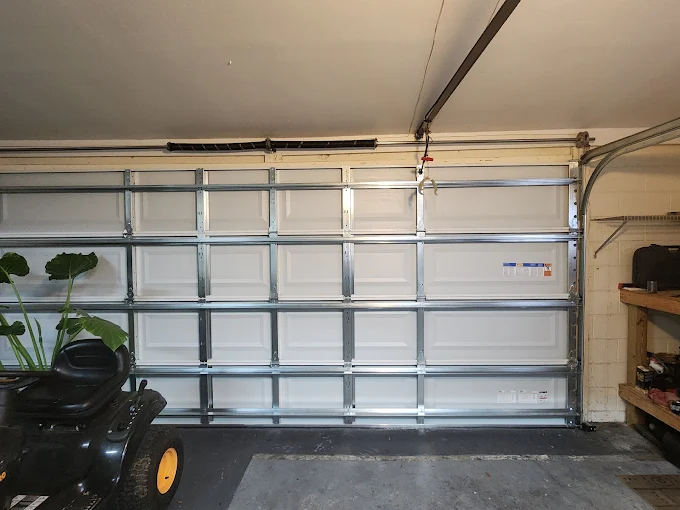Your garage door springs are the unsung heroes of your home’s largest moving system. They bear the entire weight of the door, allowing it to open and close easily several times a day. Yet, despite their importance, garage door springs often fail – leaving many homeowners frustrated and stranded.
Understanding why these failures occur helps you catch problems early and avoid dangerous breakdowns.
What do garage door springs actually do
Garage doors rely on either torsion springs (located on the top of the door) or extension springs (located on the sides).
These tightly wound metal coils balance the heavy weight of the door. When you open the door, the springs open to lift it; When you turn it off, they rewind to store energy again.
Each cycle – an open and a close – exerts tension on the metal. Over time, repeated stress weakens the spring, eventually leading to failure.
Common Causes of Garage Door Springs Failing
Even high-quality springs aren’t built to last forever. Here are the main causes of frequent spring failure:
Normal wear and tear
Each garage door spring has a set lifespan, typically 10,000 to 20,000 cycles.
If you open and close your door several times a day, that’s thousands of cycles per year. Eventually, the metal loses tension and breaks – often without any warning. Weakness can be detected by regular professional inspection before complete failure occurs.
Lack of maintenance
Like any mechanical part, springs require maintenance. Without lubrication, friction between the coils increases, leading to corrosion and premature wear.
A quick application of garage door lubricant every few months helps prevent rust, reduce stress and extend the lifespan of your springs.
Rust and corrosion
Moisture, humidity and exposure to the elements can cause springs to rust. When rust accumulates, it weakens the metal and adds additional friction.
Corrosion causes the coils to stick together, causing the spring to work harder each time it moves. That extra pressure can cause it to fail sooner than expected.
Temperature fluctuations
Extreme hot and cold weather can affect metal stress. In the colder months, springs become brittle and more prone to breakage. In heat, expansion can alter the balance and tension.
Spring failures are often seen due to this constant metal fatigue in homes in climates with large seasonal variations.
Poor installation or incorrect spring type
If your garage door springs are not sized correctly or installed correctly, they may wear unevenly.
For example, using springs not adapted to the weight of your door causes them to work harder from day one. This leads to noise in operation, jerky movements and early breakdown.
Always make sure the installation is performed by a professional who matches the correct spring type and tension for your specific door model.
Unbalanced or misaligned door
If one spring carries more load than the other, it wears out faster. Similarly, if the door tracks are unbalanced or the opener pulls unevenly, the springs experience unnecessary stress.
Regular tune-ups keep your door properly balanced and reduce spring tension – helping prevent failure.

Warning signs your springs are going bad
You can often see signs of weakening before complete failure. Beware of these red flags:
The door opens unevenly or jerks when moving.
It feels heavy to lift it by hand.
You hear creaking, grinding or cracking sounds.
The spring looks stretched, rusted, or there are gaps between the coils.
The opener struggles or stops mid-lift.
If you notice any of these, stop using the door immediately and call a professional. It can be dangerous to continue operating a door with a defective spring.
What happens when a spring breaks
When the spring breaks, the door suddenly becomes unbalanced. The full weight – often more than 150 pounds – is no longer supported.
The door may close unexpectedly or refuse to open. Attempting to lift it manually or replace the spring yourself may result in serious injury.
Professional technicians have the tools, training, and safety gear to properly replace broken springs and reset door tension for smooth operation.
How to Prevent Garage Door Spring Failure
You can’t prevent metal fatigue completely, but regular maintenance and inspection can significantly delay it.
Here’s how you can extend the life of your spring:
Lubricate springs and hinges every 3-6 months.
Have an annual professional tune-up.
Replace both springs at the same time for even wear.
Keep moisture away from the garage interior.
Avoid unnecessary overuse of the opener.
These small efforts can save you from emergency repairs and improve the performance of your garage door.
Conclusion
Garage door springs often fail due to wear and tear, lack of maintenance and environmental stress. They work under extreme pressure every day – and over time, even the best people burn out.
By understanding the causes, performing simple maintenance and scheduling professional inspections, you can avoid unexpected breakdowns and costly emergencies.
Remember: If your spring breaks, do not try to fix it yourself. Leave it to trained experts who can safely and efficiently restore the balance of your garage door.
Frequently Asked Questions (FAQ)
- How long do garage door springs usually last?
Most last between 7-10 years or about 10,000 cycles depending on use and maintenance. - Can I replace just one spring?
It is best to replace both springs together to ensure balanced tension and equal performance. - Why did my new spring break so quickly?
This may be due to improper installation, poor quality materials or an unbalanced door. - How can I tell if a spring is about to break?
Look for rust, gaps between the coils, or creaking sounds during operation. - Can I use the garage door if a spring is broken?
No, doing so puts additional pressure on the opener and may cause further damage or injury.